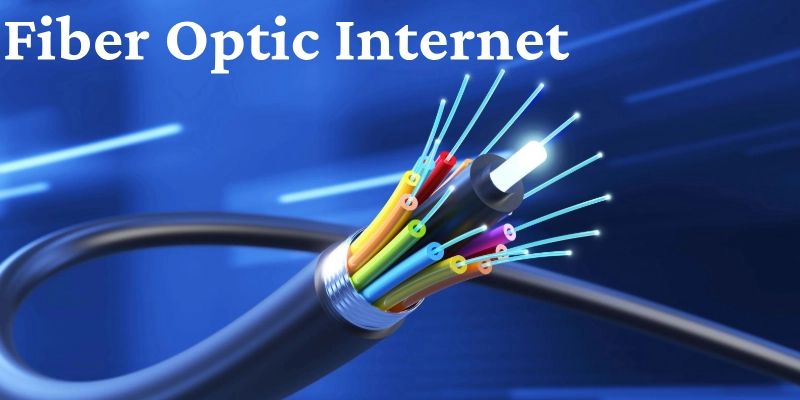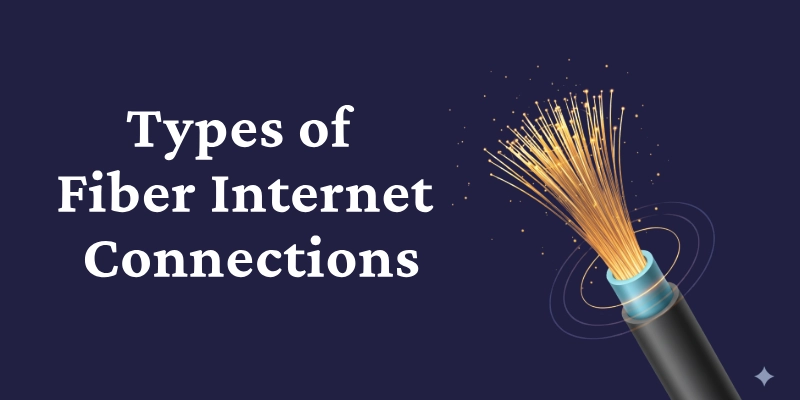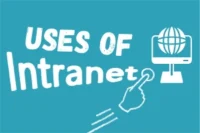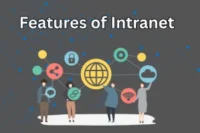Fiber Optic Internet: Complete Guide to Speed, Benefits, and Costs
Published: 18 Sep 2025
The demand for faster, more reliable internet has never been higher. With remote work, streaming, online gaming, and cloud storage becoming part of everyday life, traditional broadband connections often struggle to keep up. That’s where fiber optic internet comes in. Known for lightning-fast speeds and superior reliability, fiber has become the gold standard of internet connectivity worldwide.
In this guide, we’ll cover what fiber optic internet is, how it works, its benefits and drawbacks, installation details, pricing considerations, and whether it’s the right choice for your home or business.
What is Fiber Optic Internet?
Fiber optic internet is a broadband connection that uses thin strands of glass or plastic called optical fibers to transmit data as pulses of light. Unlike traditional copper cables that rely on electrical signals, fiber carries information at nearly the speed of light, enabling far higher speeds and lower latency.

How It Works
- Data is transmitted through optical fibers in the form of light signals.
- A central provider hub sends signals through the fiber network.
- The “last mile” delivers the connection to your home or business.
- An Optical Network Terminal (ONT) converts the light signals into usable internet for your devices.
Because light signals experience less interference and signal loss compared to copper, fiber networks can carry more data over longer distances with greater reliability.
Types of Fiber Internet Connections
Not all fiber connections are the same. Depending on how close the fiber line runs to your premises, performance may vary:
- FTTH (Fiber to the Home)
- FTTB (Fiber to the Building/Business/Block)
- FTTC (Fiber to the Curb/Cabinet)
- FTTN (Fiber to the Node/Neighborhood)
- FTTP (Fiber to the Premises)
- FTTD (Fiber to the Desk)
- FTTH (Fiber to the Home):
Fiber runs directly to a user’s house, giving ultra-fast speeds and stable connectivity. It’s the most common and reliable type for residential use.
- FTTB (Fiber to the Building/Business/Block):
Fiber reaches the building, then internal wiring (Ethernet/coax) distributes the internet. Often used in apartments and offices.
- FTTC (Fiber to the Curb/Cabinet):
Fiber stops at a street cabinet near homes, with copper cables covering the last distance. It offers good speed but lower than full fiber.
- FTTN (Fiber to the Node/Neighborhood):
Fiber connects to a neighborhood node, and copper handles the final stretch. Speeds depend on distance from the node.

- FTTP (Fiber to the Premises):
A general term that includes FTTH and FTTB, meaning fiber is delivered directly to user premises. Ensures high performance and reliability.
- FTTD (Fiber to the Desk):
Fiber reaches directly to a desk or device in offices. Ideal for businesses that need maximum speed and low latency.
Fiber vs Other Internet Types
The following table highlights the key differences between fiber internet and other common internet types based on speed, reliability, latency, and availability.
| Internet Type | Download Speeds | Upload Speeds | Latency | Reliability |
| Fiber | 300 Mbps – 5 Gbps+ | Equal to download | <20 ms | Very high |
| Cable | 100 – 1,000 Mbps | Slower than download | 20–40 ms | High but affected by congestion |
| DSL | 10 – 100 Mbps | Much slower | 40–70 ms | Moderate |
| Satellite | 25 – 250 Mbps | Lower | 600+ ms | Weather-dependent |
| Fixed Wireless | 50 – 500 Mbps | Lower | 30–60 ms | Varies by location |
Clearly, fiber stands out for symmetrical speeds (equal upload and download), which is a major advantage for remote work, video calls, and cloud storage.
Benefits of Fiber Optic Internet
The following are the major benefits of fiber optic internet that make it superior to traditional internet connections.
- Ultra-fast speeds – Gigabit internet makes streaming, gaming, and downloading seamless.
- Low latency – Crucial for online gaming, real-time collaboration, and telehealth.
- Reliable connection – Less interference from weather or electromagnetic signals.
- Symmetrical upload/download speeds – Ideal for creators, businesses, and remote workers.
- Supports multiple devices – Perfect for smart homes and offices with heavy traffic.
- Future-proof technology – Fiber networks can scale with future demands.
- Energy efficiency – Fiber consumes less power compared to copper infrastructure.
Disadvantages of Fiber Internet
While fiber offers clear advantages, there are some drawbacks to consider:
- Limited availability – Not all regions (especially rural areas) have fiber coverage.
- Installation challenges – Requires physical cabling, which may take time.
- Higher initial costs – Laying fiber lines is expensive for providers.
- Possible delays – Construction permits and infrastructure issues may slow deployment.
Who Should Consider Fiber?
Fiber optic internet is ideal for:
- Families & households with multiple devices streaming, gaming, and working simultaneously.
- Remote workers & freelancers needing reliable video calls and cloud storage.
- Businesses that depend on fast uploads, secure file transfers, and minimal downtime.
- Gamers & content creators who need low latency and high bandwidth.
- Healthcare & education sectors relying on stable, real-time connectivity.
Key Factors to Consider When Choosing Fiber Internet
Before signing up for a plan, evaluate:
- Speed tiers (e.g., 300 Mbps vs 1 Gbps).
- Symmetry of upload vs download speeds.
- Reliability & uptime guarantees.
- Customer service quality.
- Pricing & contract terms.
- Hidden fees (installation, modem rental, taxes).
- Availability in your area.
Cost of Fiber Optic Internet
Fiber internet pricing varies by provider and region, but here’s what to expect:
- Monthly fees: $40 – $90 for residential users.
- Gigabit plans: $70 – $120.
- Installation charges: $0 – $200 (often waived with promotions).
- Equipment costs: Router or modem rentals may add $10 – $20/month.
While fiber can cost more than DSL or cable, the long-term ROI is higher thanks to faster speeds, reliability, and future-proofing.
Fiber Installation: What to Expect
- Check availability with your ISP.
- Schedule a technician visit to lay the fiber line.
- Optical Network Terminal (ONT) is installed in your home.
- Router setup connects the ONT to your devices.
- Testing & activation ensures optimal performance.
Installation may take a few hours depending on complexity.
Future of Fiber Optic Internet
The future of connectivity is fiber-driven. Trends include:
- Expanding coverage in rural and underserved regions.
- Speeds exceeding 10 Gbps as new fiber tech develops.
- Integration with 5G networks for hybrid connectivity.
- Sustainable infrastructure with lower carbon footprint.
Fiber is expected to remain the backbone of global digital infrastructure for decades to come.
Conclusion
So, in this article, we’ve covered fiber optic internet in detail. It is the fastest, most reliable broadband option available today. With unparalleled speed, low latency, and future-proof infrastructure, fiber outperforms DSL, cable, and satellite connections in nearly every way. While cost and availability remain challenges, ongoing expansion and falling prices mean fiber will soon be accessible to more households and businesses worldwide.
FAQs
Here are some frequently asked questions about Fiber Optic Internet with clear and simple answers.
Yes. Fiber internet consistently delivers higher speeds compared to cable, especially during peak usage hours when cable networks often slow down due to shared bandwidth. Fiber also offers faster upload speeds, making it ideal for video calls, cloud storage, and gaming.
Symmetrical speed means your upload and download speeds are the same, which is a key advantage of fiber internet. This allows smoother video conferencing, faster file uploads, and reliable performance for remote work and content creation.
Some rural areas currently have limited fiber coverage, but providers are rapidly expanding infrastructure. Governments and ISPs are investing heavily to bring fiber to underserved communities, so availability is improving year by year.
Unlike satellite or copper connections, fiber internet is less vulnerable to rain, storms, or electrical interference. Since fiber uses light signals within glass cables, external weather conditions rarely disrupt service, ensuring a more stable connection.
Fiber optic cables typically last 25 years or more without significant degradation. Their durability, combined with future-proof technology, makes fiber a smart long-term investment compared to other internet options.

- Be Respectful
- Stay Relevant
- Stay Positive
- True Feedback
- Encourage Discussion
- Avoid Spamming
- No Fake News
- Don't Copy-Paste
- No Personal Attacks

- Be Respectful
- Stay Relevant
- Stay Positive
- True Feedback
- Encourage Discussion
- Avoid Spamming
- No Fake News
- Don't Copy-Paste
- No Personal Attacks





